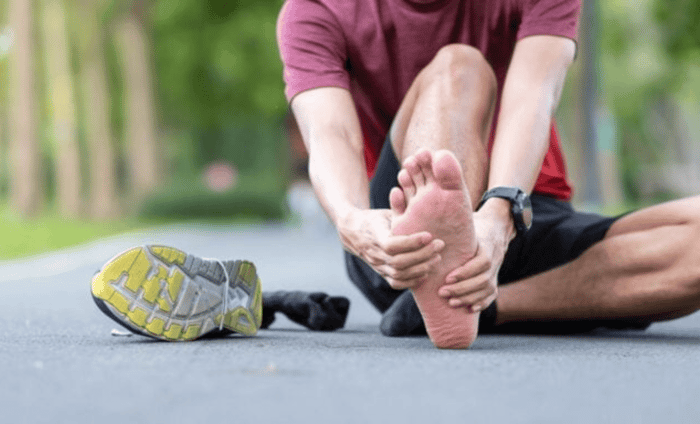Plantar fasciitis, a common cause of heel pain, can be both frustrating and debilitating. It occurs when the plantar fascia—the thick band of tissue connecting your heel to your toes—becomes inflamed. This condition often results from overuse, poor footwear, or excessive strain on the feet. While medical treatments and physical therapy can be effective, many individuals seek natural remedies to alleviate discomfort and promote healing. Here, we explore various natural methods to manage plantar fasciitis.
1. Stretching and Strengthening Exercises
Regular stretching and strengthening exercises can relieve tension in the plantar fascia and improve foot flexibility. Try these exercises:
- Calf Stretch: Stand facing a wall, place your hands on it, and stretch one leg back while keeping the heel on the ground. Hold for 20-30 seconds and switch legs.
- Toe Stretch: Sit on a chair, cross one leg over the other, and gently pull your toes toward your shin. Hold for 15-20 seconds.
- Foot Rolling: Roll a frozen water bottle, tennis ball, or specialized foot roller under your arch for a soothing massage and stretch.
2. Ice Therapy
Applying ice to the affected area can reduce inflammation and numb the pain. Use an ice pack wrapped in a cloth or a frozen water bottle. Apply it to your heel for 15-20 minutes, several times a day, especially after prolonged activity.
3. Proper Footwear
Wearing supportive footwear is crucial for managing plantar fasciitis. Look for shoes with good arch support, cushioning, and shock absorption. Avoid high heels, flip-flops, and worn-out shoes that lack proper support.
4. Orthotics and Inserts
Custom or over-the-counter orthotic inserts can provide additional arch support and reduce pressure on the plantar fascia. Gel heel cups and insoles designed for plantar fasciitis are widely available and can be an affordable solution.
5. Massage Therapy
Massaging the sole of your foot can relieve tension and improve blood flow. Use your thumbs or a small massage ball to apply gentle pressure to the arch and heel. Regular self-massage can complement other treatments and provide immediate relief.
6. Anti-inflammatory Foods
Incorporating anti-inflammatory foods into your diet may help reduce overall inflammation. Foods rich in omega-3 fatty acids, such as salmon, walnuts, and flaxseeds, are excellent choices. Additionally, turmeric, ginger, and green leafy vegetables can further support recovery.
7. Epsom Salt Soaks
Soaking your feet in warm water with Epsom salt can help relax muscles and ease pain. Add half a cup of Epsom salt to a basin of warm water and soak your feet for 15-20 minutes, especially in the evening.
8. Taping and Support
Kinesiology tape or athletic tape can provide temporary support to the plantar fascia. Taping methods stabilize the foot, reducing strain on the arch during daily activities.
9. Electrical Muscle Stimulation (EMS) Units
EMS units can be a valuable tool for managing plantar fasciitis. These devices deliver gentle electrical impulses to stimulate muscles and improve blood circulation in the foot. EMS therapy helps reduce pain, relax tight muscles, and promote healing by enhancing nutrient and oxygen delivery to the affected area. Use an EMS unit as directed, focusing on the sole and heel for optimal results.
If you're on the lookout for an effective TENS/EMS Unit, I highly recommend the Verve. This lightweight and portable device makes it easy for you to take relief with you on the go! With 24 different features and adjustable intensities, you can fully customize your recovery session to your specific needs.
10. Weight Management
Excess body weight can increase stress on the feet. Maintaining a healthy weight through a balanced diet and regular exercise can significantly alleviate plantar fasciitis symptoms over time.
11. Rest and Gradual Activity
Rest is essential for healing. Avoid high-impact activities like running or jumping, which can worsen symptoms. Instead, opt for low-impact exercises such as swimming or cycling until the pain subsides.
When to Seek Medical Help
While natural remedies can be effective, persistent or severe cases of plantar fasciitis may require professional intervention. Consult a healthcare provider if your pain does not improve after several weeks or significantly impacts your daily life.
By incorporating these natural remedies into your routine, including the use of EMS units, you can effectively manage plantar fasciitis and promote long-term foot health. Remember, consistency and patience are key to finding relief and preventing recurrence.

